Top 10 French Pastries
You Should Know
LE CORDON BLEU MALAYSIA
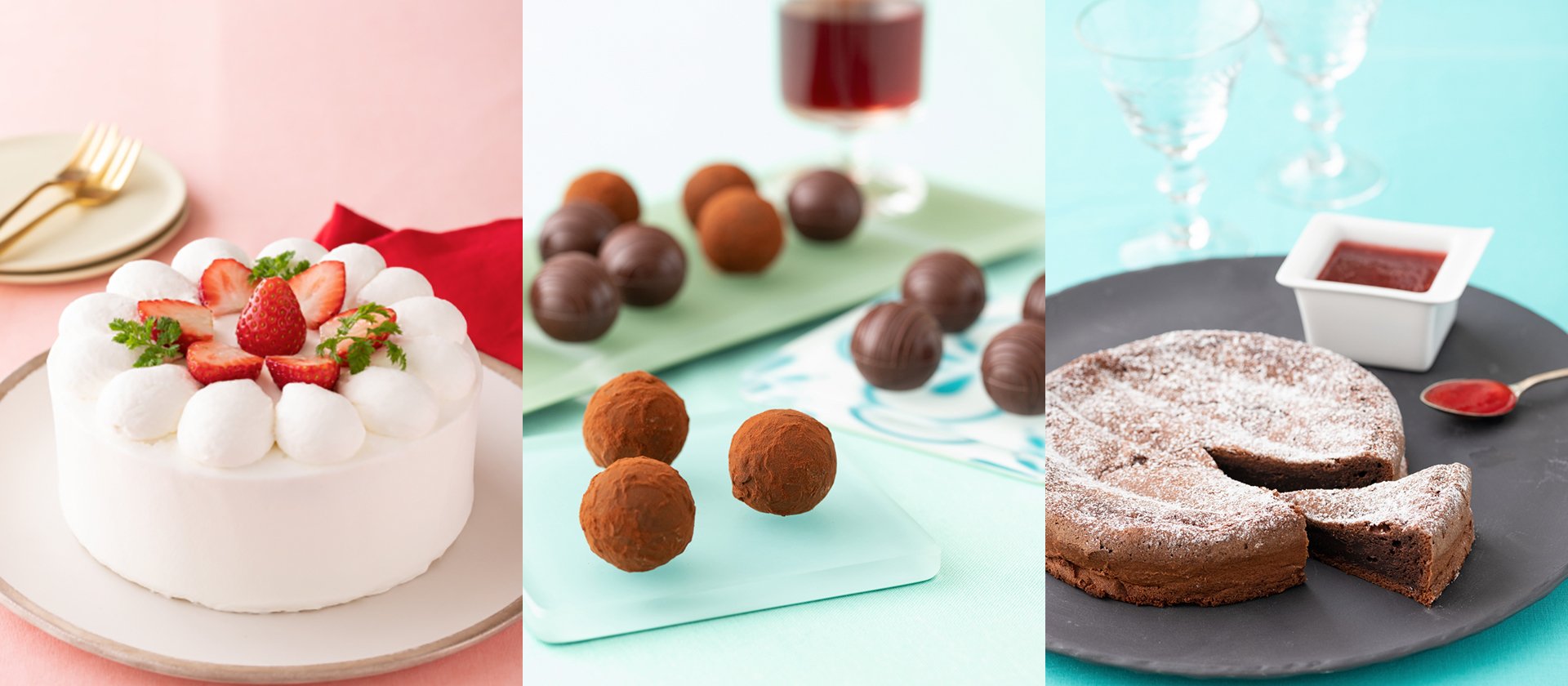
French cooking has evolved into an art form, and is regarded as one of the most respectable and prestigious cuisines globally. If there’s one thing you should not miss, it’s divine French pastries - rich and decadent, yet elegant and fanciful, these crisp, flaky and pillowy creations have captured the imagination of food connoisseurs the world over.
What’s even more fascinating is the history behind these pastries and how they have stood the test of time. Among the top 10 well-known French pastries are:
Macarons
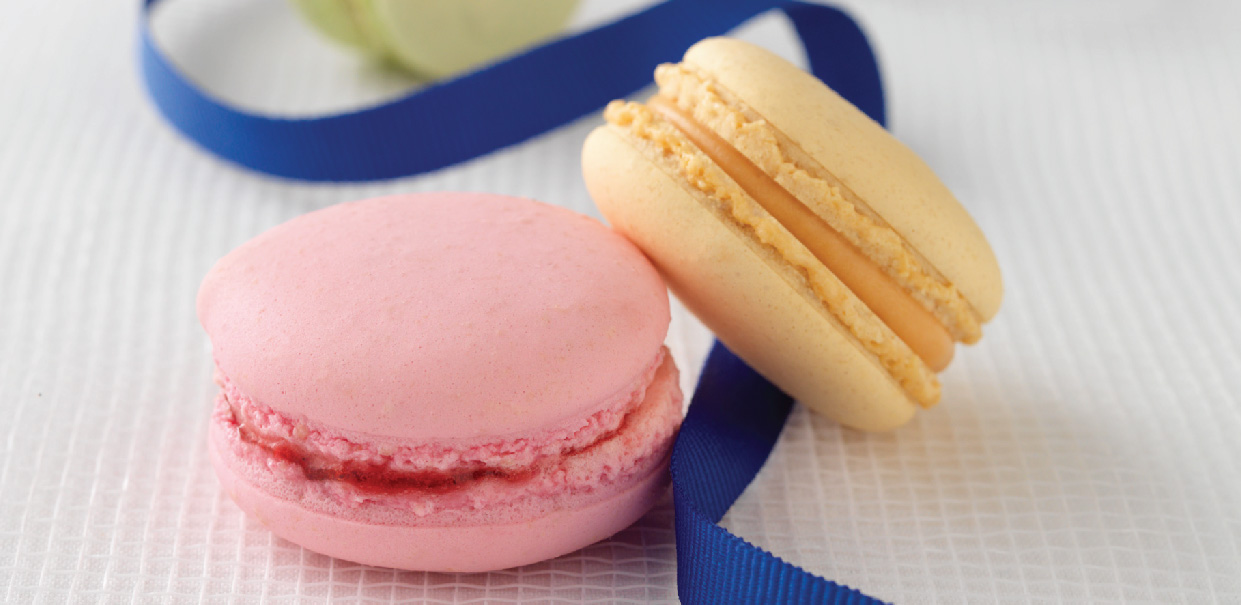
This sweet meringue-based biscuit-cake made from egg white, powdered sugar and almond flour, is quintessentially French, though popular myth has it that the chefs of Catherine de Medici from Italy introduced this when she married Henry II of France. In another legendary story, two nuns from the city of Nancy purportedly sold macarons commercially during the French Revolutionary in 1792 and made it famous. The Maison des Soeurs Macaron in Nancy is said to be baked according to the same centuries’ old recipe. Today, Saint-Emilion and Ladurée are world-renowned for their macarons.
Profiterole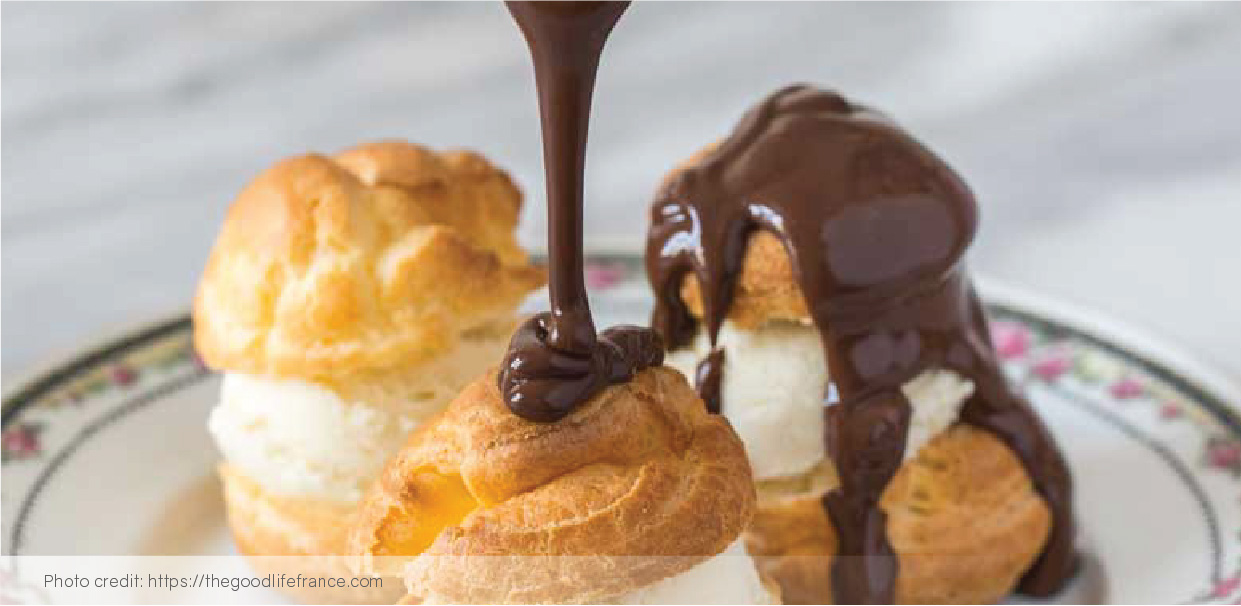
Another pastry supposedly brought to France by de Medici’s entourage of Italian chefs, this filled French choux pastry ball contains whipped cream, custard or ice-cream, and is decorated with powdered sugar, caramel or chocolate. Italian chef Panterelli invented choux pastry, but his original recipe changed over time and French patissier Jean Avice perfected the dough into choux buns. Then, chef Antoine Carême came up with the idea of filling the choux with cream in the 18th century, resulting in the profiterole as we know it today. He also invented the profiterole tower – ‘croquembouche’ - the wedding cake of choice in France.
Religieuse
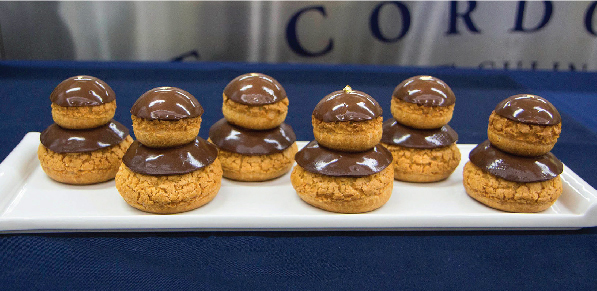
Created in the 19th century by Italian pastry chef Frascati in Paris, this is considered one of the most famous desserts in France. Translates to mean ‘nun’, it consists of two choux buns on top of each other, resembling a chubby nun with a small habit around her shoulders. The bottom half of the religieuse is larger and fatter while the top circular is smaller, both filled with cream or custard. Some versions contain chestnut cream, coffee, caramel or rose flavours.
Pain Au Chocolat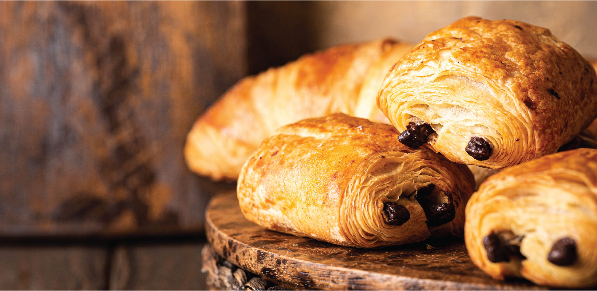
Originally made from a brioche base, this means ‘chocolate bread’ in French and has since evolved to use the same buttery, flaky pastry as a croissant. It made its first appearance in the early 19th century and is also known as chocolatine in the south-west part of France.
Mille Feuille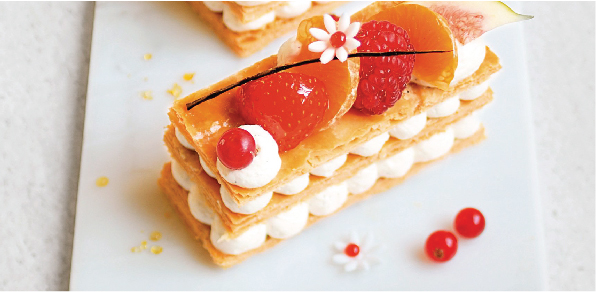
A traditional mille-feuille, translated to mean ‘a thousand leaves’, consists of three layers of puff pastry, alternating with two layers of pastry cream, and is dusted with powdered sugar on top. It sounds simple enough in execution but takes a real expert to deliver an airy, flaky and crisp vanilla slice. Similar to the Italian Napoleon that is filled with almond cream, some mille feuille variations include whipped cream, fruits, custard or chocolate glaze. The first mille feuille recipe was seen in chef François Pierre de la Varenne’s cookbook Le Cuisinier François in 1651 and famous pastry chef Adolphe Seugnot has been credited with the creation as well in the 19th century.
Éclair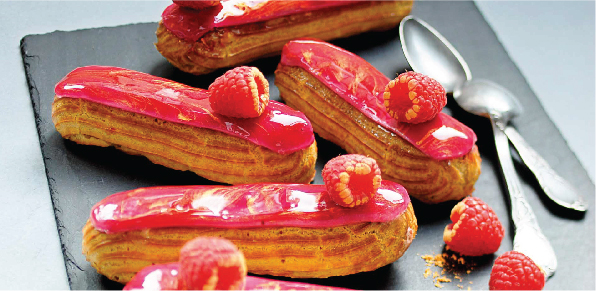
An oblong-shaped choux dough filled with cream and topped with chocolate icing, some variations are filled with chestnut puree, flavoured custard or fruit flavoured fillings. The name éclair means ‘flash of lightning’, perhaps due to the glisten of the frosting. Its origins can be traced to the 19th century when it was first called ‘petite duchesse’ and some food historians speculate that chef Carême also created this.
Madeleine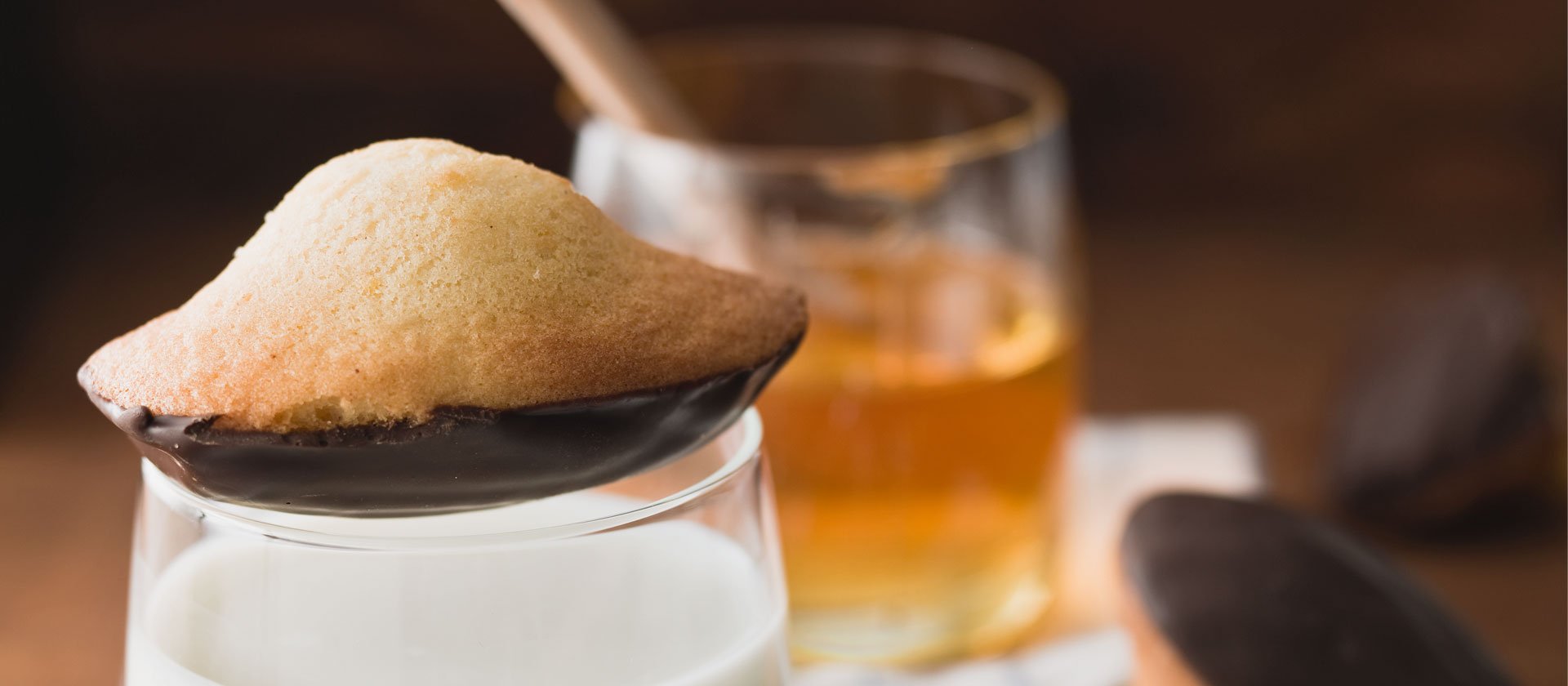
Made with eggs, flour, sugar and butter, this buttery, light and soft sponge cake is a popular tea cake in French cafés. The term madeleine possibly originated from an 18th century cook named Madeleine Paulmier who first made this, or a pilgrim named Madeleine who brought the recipe back after her pilgrimage. Others say it was chef Avice who baked this distinctive shell-shaped cake.
Cannele 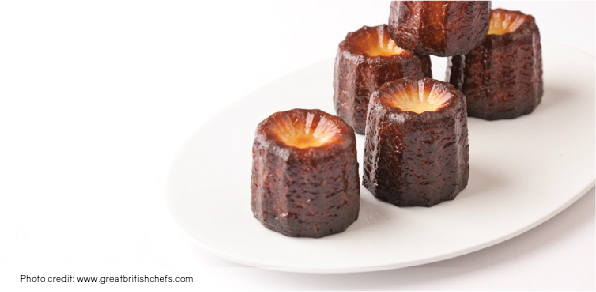
A small crisp, caramelised brown cake with a custard-like centre that has a hint of rum and vanilla, made with flour and egg yolks. It comes in a distinctive cylindrical shape and hails from the Bordeaux region. Supposedly developed in the 17th century by nuns, the traditional recipe calls for the cannele to be baked in fluted copper moulds.
Kouign Amann
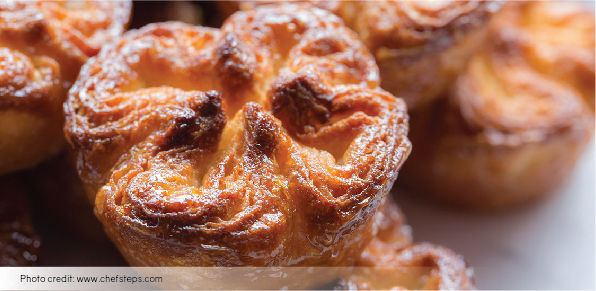
A multi-layered pastry of dough with butter, it is made using similar techniques as making a croissant. What’s different is the generous amount of sugar in and on top of it, and the caramelised golden crust. Hailing from the town Douarnenez in France which was known for its butter production, it means ‘butter cake’ in the Breton language. Believed to be an accidental happy invention by patissier Yves-Rene Scordia in the 19th century, story goes the baker ran out of desserts and experimented with thin layers of bread dough, doused with sugar.
Chouquette
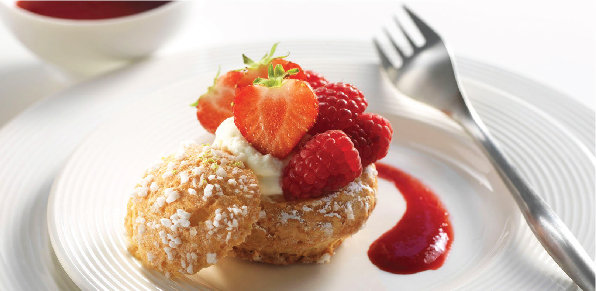
A traditional sweet French pastry made from choux dough, sprinkled with pearl sugar and filled with custard or mousse. Since the chouquette relies on steam to rise, it is quite delicate as it may deflate when still warm so it should be left to cool slowly in oven to cook a little longer in the remaining heat. Loosely translated to mean ‘little bits of choux’, choquettes are sold as an afternoon snack in France. Its origin is attributed to the Italian chefs who came with Medici as well.
Pastry-making is among the oldest and most popular arts in France, and the good news is, the French have been generous in imparting their knowledge. At Sunway Le Cordon Bleu, you can take up a Diplôme de Pâtisserie which consists of three certificates – Basic, Intermediate and Superior Pâtisserie. There at the top culinary arts institute in Malaysia, you will be taught by world class pastry chefs according to the highest standards of patisserie culinary art.
The prestigious Le Cordon Bleu diploma will equip you with the necessary skills and techniques to create French classic and contemporary patisserie, and set you up for success so that you can have the confidence to bake commercially or at home for your family.











